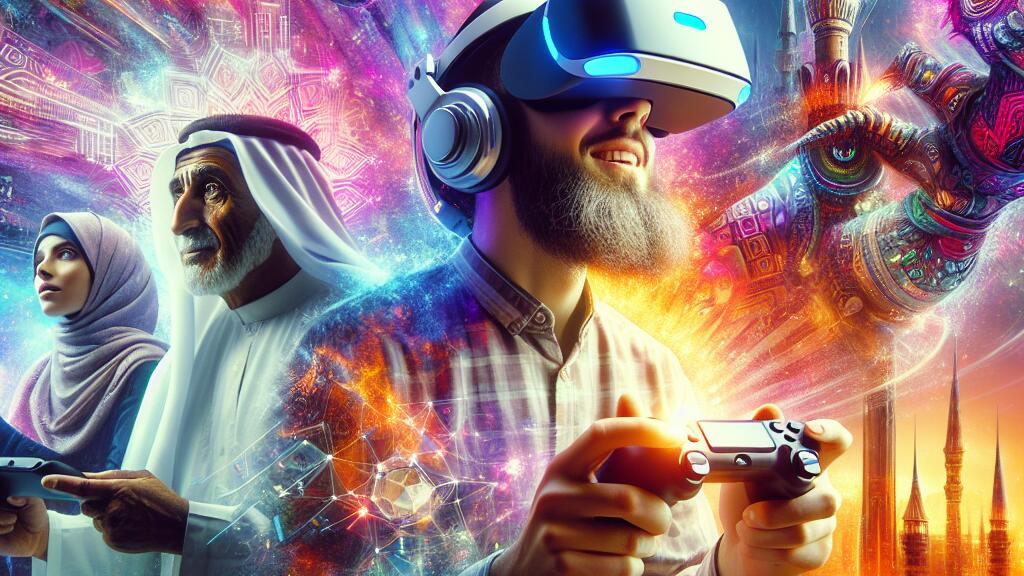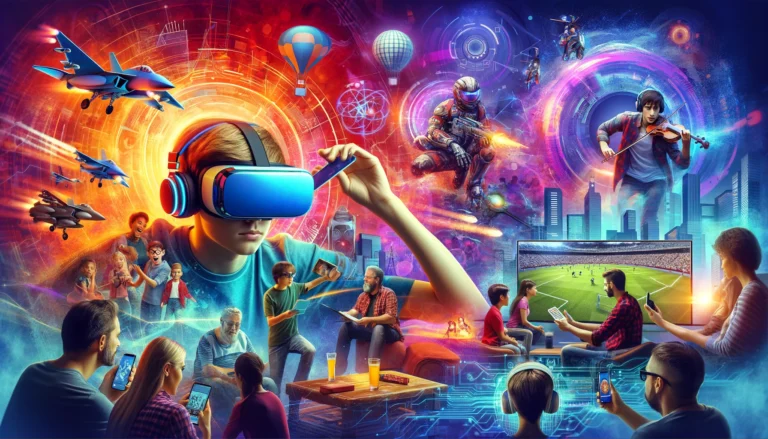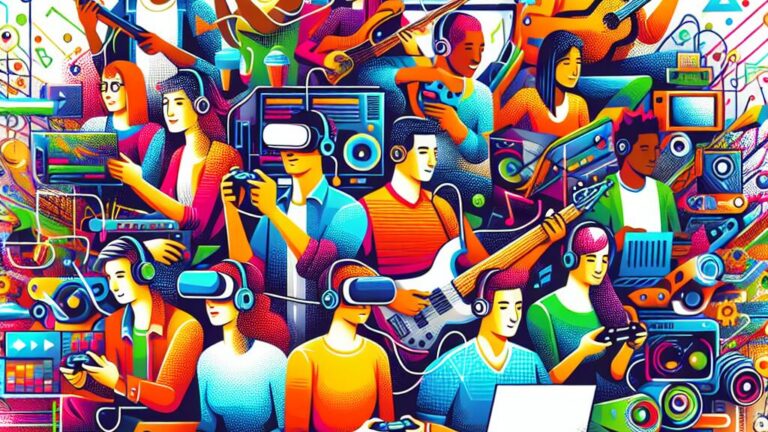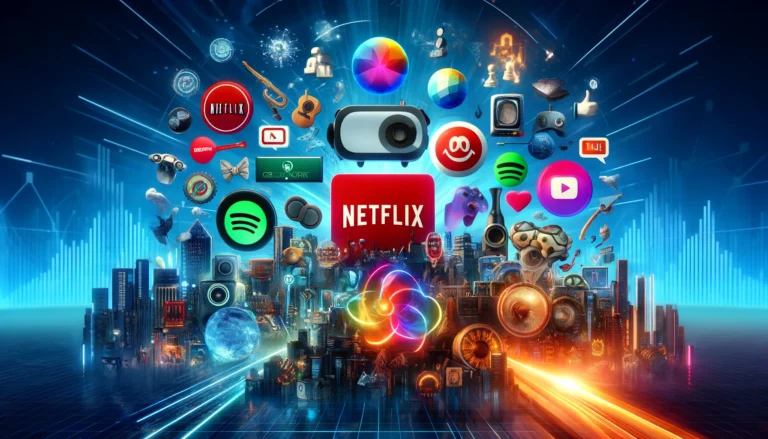In the whirlwind of digital entertainment’s ever-shifting terrain, two forces stand out—content quality and accessibility—both absolutely crucial in crafting user engagement and satisfaction. Picture this: high-quality content isn’t just fluff; it boasts rich production values, intricate storytelling, and an immersive viewer experience that lingers long after the credits roll. As platforms vie fiercely for every precious moment of audience attention, the race to provide exclusive and eclectic content has reached a fever pitch. Some players pour hefty sums into original programming gems while others amass vast troves of licensed materials. This tug-of-war shapes users’ choices based on what they deem valuable or relevant.
Now let’s dive into accessibility—a term that stretches beyond mere variety! It’s about how seamlessly viewers can tap into their desired content across a myriad of devices and platforms. Factors swirl around this concept like subscription costs, geographic barriers, and those oh-so-important user-friendly interfaces that dictate how easily one can binge-watch or explore new options. A platform designed with intuitive navigation in mind? That’s pure gold! It elevates the viewer experience from mundane to magical; thus it’s vital for service providers to perpetually evaluate and fine-tune their offerings. In navigating this complex interplay between top-notch content creation and widespread accessibility, digital entertainment services hold the key to unlocking greater satisfaction among diverse audiences everywhere.

The Role of Social Media in Digital Entertainment
Social media platforms have morphed into essential highways for digital entertainment, weaving a tapestry where creators and consumers engage in exhilaratingly fresh ways. These vibrant arenas not only amplify content but also empower artists, influencers, and production companies to cast their nets wider than ever before. Consequently, the age-old methods of advertising are gradually being eclipsed by the genuine interactions that blossom on social media. This evolution underscores the pivotal role of social sharing and feedback as they sculpt the very contours of entertainment trends.
In this whirlwind rise of social media, content creation has been democratized—anyone wielding a smartphone can broadcast their creativity to a worldwide audience! User-generated content is now an integral piece in marketing puzzles; brands eagerly seize upon the raw authenticity exuded by everyday users to boost their visibility. In such a dynamic ecosystem, collaboration between fans and creators flourishes, birthing innovative ideas and formats that enrich our digital entertainment milieu while forging deeper connections between audiences and the art they cherish.
Influencers and Their Impact on Content Consumption
The meteoric rise of influencers has utterly revolutionized the way we consume content in the sprawling realm of digital platforms. These individuals, often boasting vast followings on social media, wield an almost magical influence over their audiences’ tastes and choices. By artfully curating content that aligns with their distinct personal brands and values, influencers act as vital conduits between creators and consumers, illuminating paths to fresh trends and innovative ideas just waiting to be explored. Their endorsements can catapult a myriad of content into viral phenomena—shaping everything from fashion statements to entertainment picks.
But there’s more! The authenticity and relatability that influencers often radiate forge an extraordinary bond with their followers. This intricate interplay invites consumers to interact with content in deeply personal ways; after all, who wouldn’t trust a recommendation from someone they feel they genuinely know? The sway these social media mavens hold not only molds consumer habits but also compels brands to rethink their entire marketing playbook. Collaborations with influencers have morphed into crucial strategies for content creators eager to tap into specific demographics while cutting through the noise in today’s bustling digital landscape.
User Experience in Digital Entertainment
In the realm of digital entertainment, crafting an optimal user experience isn’t just important; it’s absolutely crucial. It weaves directly into the fabric of user satisfaction and retention—one cannot exist without the other! Picture this: a platform bursting with content, yet its interface beckons like a well-lit path through a labyrinth. Intuition must reign supreme here; users should glide effortlessly through expansive libraries, as if guided by an unseen hand.
The essence of effective design lies in its ability to categorize genres clearly, spotlight featured selections that catch the eye, and sprinkle in personalized recommendations like confetti at a celebration. These elements don’t merely serve aesthetics—they amplify discoverability! In today’s world brimming with choices that can feel overwhelming, finding what you want shouldn’t be akin to searching for a needle in a haystack.
And then there’s the mobile revolution—oh boy! The rise of smartphones has transformed how we interact with these platforms. Streaming services and gaming apps are now meticulously optimized for screens of all shapes and sizes—a tiny phone screen or a sprawling tablet display alike. Quick load times? Check! Smooth transitions? Absolutely essential! All these factors come together to create an immersive tapestry that pulls users deeper into their chosen worlds.
But wait—there’s more! Feedback mechanisms stand as stalwart sentinels in this digital landscape; they invite user reviews and ratings into the mix, cultivating community engagement while simultaneously feeding vital data back into content algorithms. This dynamic interplay further fine-tunes experiences uniquely tailored to individual preferences—a true marvel of modern technology!
Importance of Interface and Navigation
In the whirlwind of digital entertainment, a meticulously crafted interface emerges as an indispensable cornerstone. Picture this: users yearn for smooth sailing through a sea of content—a seamless navigation experience that elevates their overall enjoyment to new heights. An intuitive layout serves as a gateway, ushering them effortlessly into a treasure trove of offerings—movies bursting with drama, shows laden with intrigue, melodies that resonate deeply, and games that ignite excitement.
But here’s where it gets interesting: effective categorization and robust search functionalities act like trusty compasses in this vast landscape. They empower users to swiftly seek out their favored gems while deftly dodging frustration along the way. As platforms multiply like stars in the night sky, those daring enough to champion interface design and navigation ascend above the fray—better poised to captivate and retain audience engagement.
Now let’s dive deeper! The intricate dance of design elements plays a pivotal role in crafting user satisfaction within these digital realms. Imagine aesthetic allure melded seamlessly with functionality—it’s not just eye candy; it’s what draws users back time and again! Clear pathways for navigation invite exploration at every turn, sparking binge-watching marathons or prolonged dives into captivating content.
And wait—there’s more! Adaptive interfaces that morph based on user behavior weave an enchanting tapestry of personalization throughout the experience. In such a crowded marketplace brimming with options galore, striking the right balance between visually appealing aesthetics and navigational ease becomes paramount for any service hoping to stand out amidst the chaos.
Content Creation and Distribution
The realm of digital entertainment has undergone a seismic shift, all thanks to the explosion of cutting-edge technologies that streamline both content creation and distribution. Imagine creators wielding advanced tools and platforms, effortlessly crafting high-quality masterpieces—it’s a whole new ballgame! This wave of democratization is like opening the floodgates for an eclectic mix of voices to rise up, saturating the media landscape with diverse narratives that resonate with niche audiences galore.
But wait—it gets even more fascinating! The surge of streaming services and social media channels has turned traditional distribution on its head. No longer do creators need to tiptoe through the halls of old-school gatekeepers; instead, they can broadcast their work globally in mere moments. Yet as these barriers crumble away, competition among creators goes into overdrive. It’s no longer enough for content to simply be engaging; it must also align seamlessly with how today’s audiences consume media.
User-generated content? Oh, it’s not just a trend—it’s revolutionizing engagement itself! Platforms are practically rolling out the red carpet for community involvement and collaboration, transforming viewers from passive consumers into active co-creators. And let’s talk strategy: marketing effectiveness now hinges on deciphering what makes these empowered viewers tick—their preferences and behaviors dictate everything! Consequently, this dynamic environment compels creators to keep pushing boundaries in how they deliver and promote their work. Buckle up—this ride through digital entertainment is only getting started!
The Rise of User-Generated Content
User-generated content (UGC) has dramatically reshaped the realm of digital entertainment, unleashing a torrent of creativity as individuals seize the chance to share their unique expressions with an audience that spans the globe. Platforms like YouTube, TikTok, and Instagram have become vibrant canvases where users wield tools to craft high-quality videos, music, and art—sparking a dynamic sense of community and collaboration among creators. This seismic shift towards UGC injects a rich tapestry of diversity into content offerings, capturing personal experiences and distinct viewpoints that traditional media often glosses over.
But wait! The ascent of this newfangled content form doesn’t just democratize creation; it also sends ripples through how digital audiences consume what’s out there. With increasing frequency, consumers find themselves drawn to authentic narratives—those relatable gems that resonate deeply with their own values and interests. As if on cue, brands and marketing agencies are jumping at the opportunity to forge alliances with popular influencers who can unlock access to these coveted audiences, amplifying reach and engagement in ways previously unimagined. The fusion of UGC with branded content paves the way for groundbreaking innovation in storytelling and advertising alike—a transformative force redefining how we produce and consume in this ever-evolving digital landscape!
Regional Differences in Digital Entertainment
Digital entertainment experiences are a kaleidoscope, shifting dramatically from one region to another, shaped by the intricate tapestry of cultural norms, preferences, and consumption habits. Take North America and Europe: here, subscription-based streaming services reign supreme, catering to an eclectic mix of audiences with a veritable smorgasbord of content. Yet venture into Asia, and you’ll find a fascinating fusion where traditional media dances hand-in-hand with digital innovations—mobile platforms emerging as pivotal players in this dynamic delivery system. These regional disparities do more than just affect what’s on offer; they sculpt the very ways viewers engage with and interact around their chosen content.
Cultural influences run deep when it comes to what strikes a chord with audiences. Consider local storytelling traditions or the nuances of regional humor—they often serve as barometers for success in films and series tailored for specific markets. Creators must tread carefully through these cultural landscapes, ensuring their work resonates meaningfully while being irresistibly appealing. Complicating matters further are government regulations and censorship that can restrict certain genres or themes’ availability—adding yet another layer of complexity to the already labyrinthine digital entertainment scene across different territories. To navigate this global marketplace successfully? One must grasp these subtleties like an artist mastering a palette rich in color and contrast!
How Culture Influences Content Preferences
Cultural backgrounds, with all their intricate layers, profoundly shape what viewers prefer, twisting and turning the types of stories, themes, and genres that strike a chord across different audiences. In some societies, where values like family ties, community bonds, and cherished traditions reign supreme, there’s often a hearty appetite for narratives that echo these ideals. This inclination nudges creators toward crafting material steeped in cultural expectations—stories that resonate deeply within those frameworks.
On the flip side of this vibrant spectrum lies cultures celebrating individualism and personal exploration. Herein lies a thirst for content that showcases distinctive perspectives and unique journeys—adventures marked by self-discovery rather than collective norms.
Delving into regional quirks unveils further richness; humor varies wildly along geographical lines while language nuances dance to distinct social rhythms—all contributing to an ever-expanding tapestry of consumption habits. Picture this: a comedic flair adored in one locale might fall flat in another—a reality check on how shows or films fare when crossing borders.
As digital platforms continue weaving together global threads of entertainment distribution, grasping these cultural subtleties becomes not just important but essential for creators aiming to captivate diverse audiences. By tailoring content to echo cultural identities authentically—not merely as an afterthought—creators can elevate relevance while nurturing meaningful connections between their work and viewers’ hearts.
| Cultural Aspect | Preferred Content Type | Example Genres/Themes | Common Audience Reactions |
|---|---|---|---|
| Collectivist Societies | Family-oriented Narratives | Drama, Family Saga, Traditions | Empathy, Nostalgia |
| Individualistic Societies | Personal Journey Stories | Adventure, Coming-of-age, Fantasy | Inspiration, Engagement |
| Humor Variation | Comedic Content | Satire, Stand-up, Sketch Comedy | Varied reactions; laughter or confusion |
| Regional Preferences | Culturally Specific Content | Folklore, Historical Narratives | Connection, Pride |
Legal Considerations and Copyright Issues
The explosion of digital entertainment platforms brings with it a whirlwind of legal and copyright quandaries, casting shadows over creators, distributors, and consumers alike. The tangled web of content ownership has become increasingly intricate as myriad sources converge on various platforms. This reality demands an unwavering commitment to copyright laws that shift like quicksand depending on where one stands jurisdictionally. Companies are caught in the balancing act—securing those all-important licenses while simultaneously safeguarding their original creations from the clutches of unauthorized use. To falter here is to risk financial ruin and tarnished reputations.
Piracy looms large as a relentless specter in this digital landscape, gnawing at the revenue streams vital for creators and service providers alike. The illicit distribution of content chips away at the economic foundation upon which creative projects stand, dissuading investment in fresh ideas bursting with potential. In response, efforts to tackle piracy often deploy technological shields such as digital rights management (DRM) systems alongside legal strikes against wrongdoers. Yet combating this menace isn’t just about enforcing laws; it’s a complex dance that intertwines hard-hitting legal action with consumer education aimed at illuminating the intrinsic value embedded within original works.
The Impact of Piracy on Digital Services
Piracy presents a labyrinth of challenges for digital services, gnawing away at the revenue streams that sustain content creators and distributors alike. When unauthorized access to copyrighted materials occurs, it unleashes a tidal wave of financial losses across a multitude of sectors—film, music, software—the list goes on. As consumers flock to alluring free platforms that operate in the shadows of legality, legitimate services struggle in an uphill battle for survival. Their capacity to innovate—whether through investing in fresh content or cutting-edge technology—hangs precariously in the balance.
In response to this relentless threat, digital services are ramping up their defenses with increasingly sophisticated measures aimed at staving off piracy’s insidious reach. Among these tactics is the deployment of digital rights management (DRM) technologies designed to impose strict boundaries around how content can be shared and replicated. Moreover, service providers often find themselves embroiled in legal skirmishes against piracy websites and underground platforms as they strive valiantly to safeguard their intellectual property. Yet even amidst these determined efforts, the ever-evolving landscape of piracy tactics continues to cast long shadows over the future stability of digital entertainment industries—a perpetual game of cat and mouse where risks abound at every turn.
- Piracy leads to significant revenue loss for content creators and legitimate service providers.
- Unauthorized access compromises the quality and distribution of digital content.
- Legitimate services face intensified competition from free, illicit platforms.
- The ongoing financial strain can impede innovation and quality improvements in legitimate services.
- Legal battles against piracy websites divert resources away from content development.
- Digital rights management (DRM) technologies are essential for protecting intellectual property.
- Collaborative efforts between industries and law enforcement are crucial for effective anti-piracy measures.
Future Trends in Digital Entertainment
As the landscape of digital entertainment twists and turns with relentless innovation, we find ourselves on the brink of an exhilarating transformation fueled by groundbreaking technologies like artificial intelligence and virtual reality. Imagine AI algorithms darting through vast data oceans, curating content suggestions with uncanny precision—each recommendation a key to deeper viewer engagement. Meanwhile, enter the realm of virtual reality: a captivating universe where immersive experiences reign supreme, far surpassing anything conventional media can muster. These advancements are not merely incremental; they herald a seismic shift in how audiences engage with their beloved entertainment.
Now cast your gaze upon another pivotal trend—the meteoric rise of subscription-based models eclipsing traditional advertising revenues. This evolution offers creators a tantalizing promise: more stable income streams while delivering blissfully ad-free viewing for audiences! But wait—there’s more! Fintech innovations are weaving seamless payment solutions into these platforms, making microtransactions as effortless as breathing and unlocking doors to exclusive content that once seemed unreachable. Such developments reflect an unmistakable tide—a sweeping movement prioritizing user satisfaction over all else in the vibrant world of digital entertainment services.
Innovations to Watch in the Coming Years
The digital entertainment landscape is teetering on the edge of a groundbreaking transformation, fueled by leaps in technology that promise to upend our current reality. Take, for instance, the remarkable infusion of artificial intelligence into the realms of content creation and recommendation algorithms. AI isn’t just a tool; it’s poised to revolutionize how we experience media by tailoring viewing options to align with each user’s unique tastes and preferences. Imagine an algorithm that not only learns but anticipates your next binge-worthy obsession! Moreover, machine learning becomes a vital ally for creators—equipping them with insights into audience behavior, enabling them to craft content optimized for maximum engagement.
But wait! There’s more: enter virtual reality (VR) and augmented reality (AR), two powerhouse technologies set to redefine audience interaction in ways previously confined to sci-fi fantasies. These immersive experiences plunge users into worlds where they don’t just watch stories unfold—they live them! As platforms increasingly embrace VR and AR, the boundaries of storytelling blur, opening up exhilarating avenues for audience participation that were once unthinkable. The significant investments pouring into these innovations signal a seismic shift in consumer expectations—a pivot toward richer, more interactive forms of media consumption that demand our attention like never before. Buckle up; we’re just getting started!
Conclusion
In the whirlwind of digital entertainment’s relentless evolution, where technology dances intricately with culture and user engagement, we witness a fascinating tapestry being woven. Platforms vie vigorously for the ever-elusive attention of audiences, thrusting high-quality content and immersive experiences into the spotlight as non-negotiable essentials. This dynamic shift not only broadens accessibility but also revolutionizes how consumers engage with their favorite forms of entertainment—it’s a landscape that demands providers to be hyper-aware of emerging trends and shifting preferences.
Gazing into the crystal ball of digital entertainment’s future reveals a realm teeming with innovation! Picture this: artificial intelligence intertwining seamlessly with augmented reality, all while social media dynamics twist and turn in unpredictable ways. These technological marvels promise to craft highly personalized and captivating content journeys. Yet, amidst this thrilling transformation lies a maze filled with legal hurdles and regional nuances; it’s clear that what unfolds next will reshape how we consume entertainment on an expansive global canvas!




